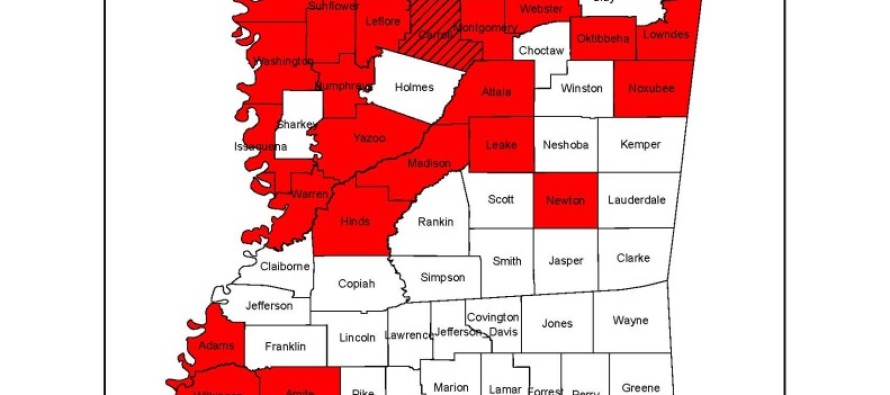Frogeye Leaf Spot Management Suggestions for the 2014 Season

Frogeye leaf spot has been observed in a few fields throughout MS as of last week. One field outside of Moorhead, MS was being treated as I was collecting leaf samples for a graduate student project. Following the initial observations of strobilurin-resistant frogeye leaf spot in TN during the 2010 season, a large effort, supported by the Mississippi Soybean Promotion Board, has been undertaken throughout MS to determine how widespread fungicide resistance is within the frogeye leaf spot fungal population. During the 2013 season frogeye leaf spot samples were collected from a total of 47 counties. A graduate student, Mr. Jeff Standish, worked diligently throughout the fall and winter and determined that the fungal population from 44 of the sampled counties was in fact resistant to the strobilurin (quinone outside inhibitor or QoI fungicides) class of fungicides (e.g., Aproach, Evito, Gem, Headline, Quadris). A new map highlighting the counties with confirmed resistance to the strobilurin fungicides can be located at: QoIresistant_counties_6-24_update. In addition, a map highlighting the counties from a more regional standpoint where the fungus has been confirmed to be resistant to the strobilurin fungicides can be located in the “Disease Monitoring” section of the Mississippi Crop Situation Blog. Based on those results, some strategies should be adopted for the R3/R4 fungicide application timing moving into the future.
First and foremost, know the variety planted in a particular field. In addition, remember that the R3/R4 fungicide application is generally made to provide protection into the future and should not be based on the weather we have received to this point. Moreover, the general fungicide application made at that specific timing is most beneficial in high-yielding situations where continues soybean is planted in irrigated fields. To determine whether a variety is tolerant or susceptible to frogeye leaf spot, refer to:
Maturity Group IV ratings: https://www.mississippi-crops.com/2014/01/23/2013-soybean-variety-trial-disease-ratings-maturity-group-iv-frogeye-leaf-spot-and-cercospora-blight/
Maturity Group V ratings: https://www.mississippi-crops.com/2014/01/26/2013-soybean-variety-trial-disease-ratings-maturity-group-v-frogeye-leaf-spot-and-cercospora-blight/
Some basic fungicide suggestions:
- In frogeye leaf spot susceptible soybean varieties
If you are planning on making a fungicide application at the R3/R4 timing, and you have planted a frogeye leaf spot susceptible soybean variety, use a pre-mix or tank mix fungicide. The dual mode of action (strobilurin + triazole or strobilurin + carboximide) could be beneficial since frogeye leaf spot has already been detected in some fields of susceptible soybean varieties.
- In frogeye tolerant soybean varieties
If you plan to make a fungicide application at the R3/R4 timing, and you have a frogeye tolerant soybean variety planted, making the application with a stand-alone strobilurin fungicide can still be done.
- In frogeye leaf spot susceptible soybean varieties exhibiting symptoms of frogeye
Make a fungicide application with either a stand-alone “curative” product (triazole) or with a pre-mix or tank-mix combination. In continuous soybean fields, even in situations where frogeye leaf spot has likely developed resistance, the strobilurin product may provide some benefit on late-season soybean diseases. However, in trials conducted during the 2013 season in Starkville, MS, in a field with a confirmed strobilurin-resistant frogeye leaf spot isolate, those plots that received a stand-alone strobilurin resulted in no yield advantage compared to the non-treated plots.




Let me tell You a sad story ! There are no comments yet, but You can be first one to comment this article.
Write a comment